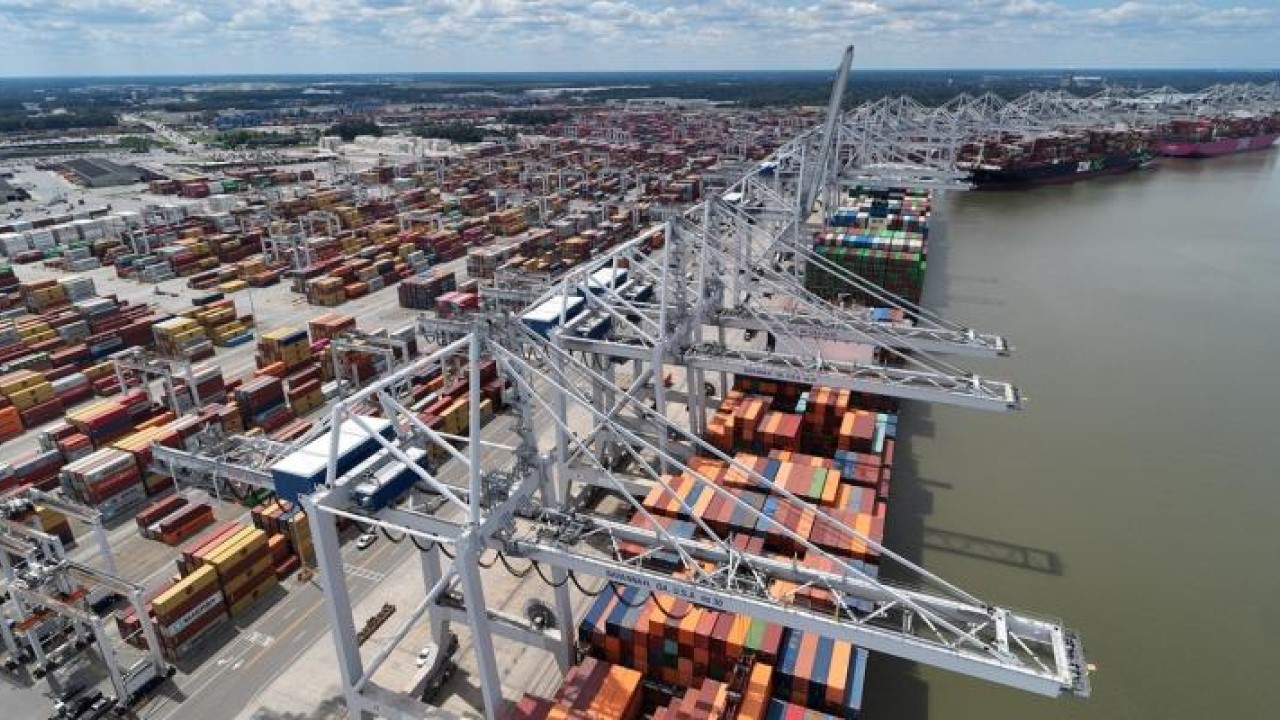
Shippers are hurrying to retrieve imported containers from ports along the US East Coast
6 months ago
Shippers are hurrying to retrieve imported containers from ports along the US East Coast

Truck queues are increasing at ports on the US East Coast, prompting shipping lines to implement contingency plans in light of an impending dockworkers' strike that is only a week away.
At a Glance
• Shipping lines are urging customers to collect cargo from US East Coast ports by 30th September.
• Negotiations between employers and unions are stalled over terms for a new six-year labor contract.
• Analysts project that the daily cost of a strike could exceed $1 billion.
During a recent Friday meeting at an East Coast port, a senior official noted an unusually large queue of trucks picking up inbound containers, indicating that cargo receivers are preparing for a potential shutdown at the end of the month. This aligns with warnings from shipping lines advising customers to act swiftly.
Ocean Network Express (ONE) is particularly urging cargo owners to pick up containers by September 30, cautioning that reefer containers will not be monitored if a shutdown occurs. Similarly, Maersk has advised its customers to expedite documentation and customs clearance to ensure timely cargo retrieval, as ports will be inaccessible during any work stoppage. Hapag-Lloyd has issued comparable guidance to its clients about hastening clearance and collecting cargo in advance of a potential shutdown.
In light of the situation, ONE is omitting port calls on five services to the US East Coast over the coming days, redirecting cargo to alternative ports to facilitate deliveries before a possible shutdown. The company emphasizes the importance of retrieving cargo from these alternate discharging ports prior to October 1, 2024.
Discussions between the International Longshoremen’s Association (ILA) and the United States Maritime Alliance (USMX) have yet to resume. USMX stated, “Despite our ongoing efforts to engage the ILA and resume bargaining, we have been unable to schedule a meeting to continue negotiations on a new Master Contract. We are prepared to negotiate at any time, but both parties must come to the table if we hope to reach an agreement, and there is currently no indication that the ILA is willing to negotiate.”
USMX has expressed its readiness to collaborate with the Federal Mediation & Conciliation Service (FMCS), a part of the US Department of Labor, to facilitate mediation.
The divide between the two sides appears substantial. The ILA is reportedly seeking wage increases of up to 80% over the contract’s six-year duration, leveraging the profits earned by major shipping lines following the supply chain disruptions caused by COVID-19. In contrast, USMX points to a 32% wage agreement reached by longshoremen on the US West Coast in Summer 2023.
Additionally, the ILA has insisted that terminal operators limit their efforts toward automating cargo handling, although bulk cargo operations would remain unaffected by labor actions.
Carriers, closely tied to terminal operations either through ownership or long-term contracts, are preparing for the worst-case scenario—a strike. CMA CGM, Hapag-Lloyd, and MSC have announced surcharges for cargo movements at East Coast and Gulf Coast ports, ranging from $800 per TEU to $3,000 for 40- and 45-foot containers.
Lines are also planning for vessels arriving at the US East Coast post-October 1 shutdown, with Maersk indicating that ships en route to ILA-affected ports may anchor temporarily. “Daily assessments will guide port calls, and adjustments will be made as needed. We aim to minimize delays and maintain our schedules,” the company informed customers.
Regarding exports, ONE will continue accepting bookings for dry cargo containers but will halt all reefer cargo bookings starting October 1.
Economic analysts are voicing concerns about the potential impacts of work stoppages at East Coast and Gulf Coast ports. One analyst from Oxford Economics estimates the daily strike cost could exceed $1 billion and noted that a two-week strike could disrupt supply chains well into 2025.
Chris Butler, CEO of National Tree, which imports artificial Christmas trees and holiday decorations, mentioned that while they have taken every precaution to avoid delays at East Coast ports, they anticipate that 15% of their goods could be stranded if a strike begins on October 1. “Every day of strike translates to five days of delayed shipments, making it essential to reach a swift agreement,” he stated.
As the countdown to the US elections on November 5 approaches, neither Kamala Harris, the Democratic candidate, nor her Republican opponent, Donald Trump, has publicly commented on the situation. One potential government intervention is the Taft-Hartley Act, which could impose an 80-day “cooling-off period” on the parties involved. However, unnamed sources within the Biden administration have indicated that invoking this act is not currently planned.
Source: Sea Trade Maritime News